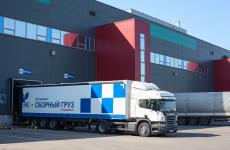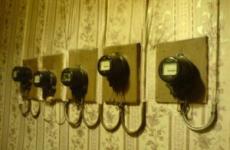Which antenna amplifier for tv is better. Choice of amplifier for digital broadcasting DVB-T2
In our digital age, family evenings are gradually becoming a thing of the past. But even today, for many, TV remains the only window into the world and a way to diversify their leisure time. And how many unpleasant emotions a poor-quality television picture causes are blurry, floating, scattered into individual pixels ... In most cases, such problems can be treated simply by buying a special amplifier for a TV antenna. In how to choose and install the amplifier for, try to figure it out together.
How to choose an amplifier for the TV antenna?
There are so many models of various amplifiers on the market today. television signalthat, at first glance, it is difficult to decide which one is suitable in each specific case. In fact, everything is much simpler - in order to make the right choice, you only need to know a few parameters:
- The approximate distance at which the nearest point is transmitting the television signal. Depending on this distance, select the gain of the amplifier. The maximum distance to the transmitting point may be about 150 km. When the distance is less than 10 km, the amplifier is not needed at all - it is enough to choose the right TV antenna. In this case, it is absolutely wrong to “be greedy” and buy an amplifier, with a factor higher than necessary - such devices tend to self-excitement and instead of a super-quality picture, only new interferences will come out in the end.
- The range of frequencies at which the signal is transmitted is meter, decimeter, etc. A good solution for any range would be to install a broadband amplifier on a universal antenna that can receive waves of any frequency. But a much better result will be obtained when installing a narrowly targeted amplifier operating in a specific range.
- Type of installed television antenna. For example, on lattice-type television antennas, the signal is amplified by swa amplifiersoperating in the 49-790 MHz band. But the very popular outdoor antennas for TV Locus work fine with LSA amplifiers.
- When choosing it is worth paying attention to the noise figure of the amplifier - the smaller this parameter is, the better the picture on the TV screen will be in the end.
How to install antenna booster for tv?
Installation of modern models of amplifiers for the TV antenna is so simple that even a person who is absolutely far from radio engineering can do it. Included with the amplifier is a power supply unit through which the amplifier is connected to the power supply network. The power consumption of such a device is quite small and is usually about 10 watts. When installing the amplifier directly to the antenna, the wiring diagram using a special adapter – adapter is used. 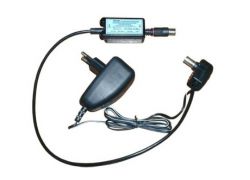 When using such a device, the amplifier receives power directly via a coaxial cable, simultaneously with the television signal. Such an adapter has two outputs: one connects the cable from the television antenna, and the other output is connected to the antenna connector of the TV, while the adapter itself is connected to the household electrical outlet.
When using such a device, the amplifier receives power directly via a coaxial cable, simultaneously with the television signal. Such an adapter has two outputs: one connects the cable from the television antenna, and the other output is connected to the antenna connector of the TV, while the adapter itself is connected to the household electrical outlet.
When choosing a place to install the amplifier for the antenna, it should be remembered that the closer it is installed to the antenna, the better the signal will be. In this case, the amplifier must be reliably protected from the influence of precipitation. In case of use indoor antennas with an amplifier for the TV, the latter can be installed both directly on the antenna and at a short distance from it.
There are a large number of varieties of various television amplifiers, which by their design features can be wide-band, range, and can be multi-band with the ability to distribute the signal to several receivers. Antenna amplifiers can also be designed for both far and close signal reception.
On the well-known "Polish" antennas and other lattice analogs, the most frequently installed broadband device is SWA and LSU. When choosing such a device, you should pay attention to the noise figure. It should be as low as possible. These devices operate, as a rule, from 49 to 790 MHz.
Council To the signal supplied to the TV, was as clear as possible, you should also pay attention to the gain factor.
Band devices are not the most widespread, most often they are used in the event that a regular amplifier fails. The well-known multi-band inventions Alcad and Terra are capable of decomposing the input channel into several components. In general, their direct purpose is to receive several streams and put them together.
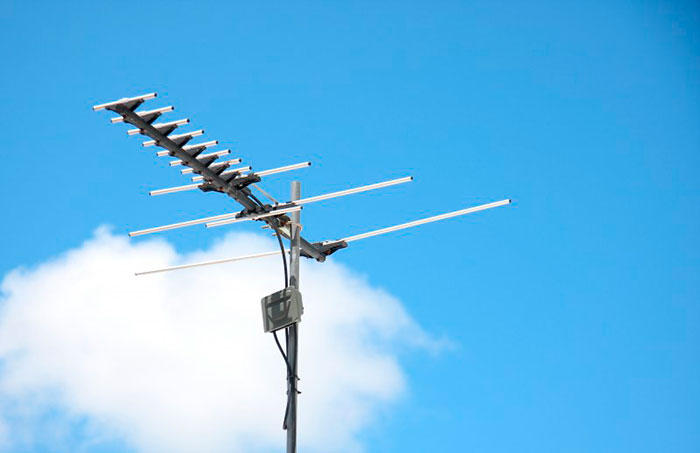
Where is the best place to install an amplifier?
Due to modern technologies, the transmission of a television signal to the viewer is carried out today by satellite and cable. But there is also a broadcast due to analog signalIt is most susceptible to external factors, so the signal reaches its final destination in a distorted form, which significantly affects the quality of the television picture. To reduce the signal quality can:
- hills, hollows, hilly terrain;
- high residential development density;
- significant removal of the receiver from the repeater;
- natural or artificial interference.
Antenna amplifier, it is desirable to install directly on the antenna or near. The device must be protected by a special rain hood. Power supply with antenna is carried out by a coaxial cable, which will ensure high-quality signal transmission without attenuation. The amplifier itself is a complex of various semiconductors. Amplification of the signal can be achieved due to the presence of multiple capacitors, microcircuit and controller. Therefore, this device is a full-fledged radio electronic device.
Criteria for device selection
You can often hear from people complaining about the quality of the television picture that the image is “snowing” and is not distinguished by its clarity. To eliminate this ailment when choosing an amplifier you need to know about some important indicators:
- The required frequency range.
- Type of antenna installed.
- The distance to the transmitting station.
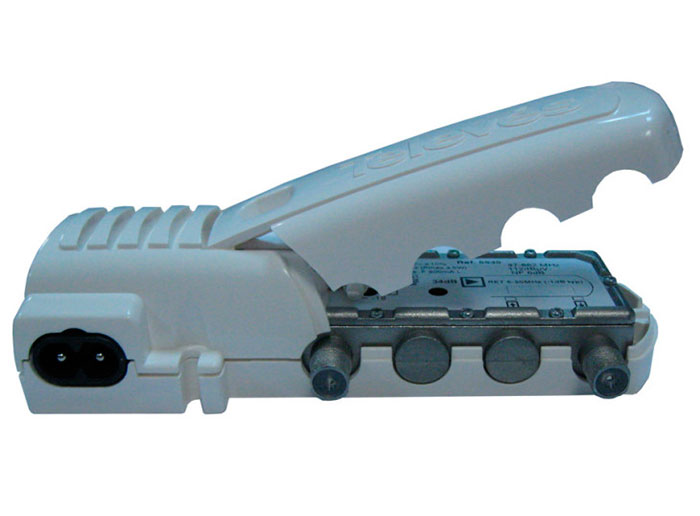
The maximum distance covered by the amplifier is 150 km
It is also important to remember the following rules: if the station that transmits a television signal is less than 10 km, then the amplifier is not installed. In this case, it will be enough to set up a conventional lattice antenna. But the maximum range parameter, which is able to overcome the signal - 150 km. Based on the calculated distance to the station, the appropriate device is selected with the required gain factor.
However, it is important to observe the "middle ground". An amplifier with a too high ratio is capable of producing noises that will interfere with its stable and efficient operation. It is possible today to select the necessary device with the necessary characteristics due to special tables and consultation with the master, who will be able to accurately determine and calculate all the necessary parameters.
Some types of amplifiers
Today, the most widespread among buyers are Alkad’s inventions and the device from Terra. The first is good because it has a kind of layout with two and four outputs. This will allow you to connect multiple TVs in the apartment at once. Some models allow you to adjust the gain parameter, which is a definite plus.
Devices from Terra also contain a power supply unit with a power consumption of 10 watts. The block can be embedded, its stabilization occurs due to the operation of pulse modulation. To date, devices with a similar principle of operation have almost completely replaced the overall blocks of transformers.
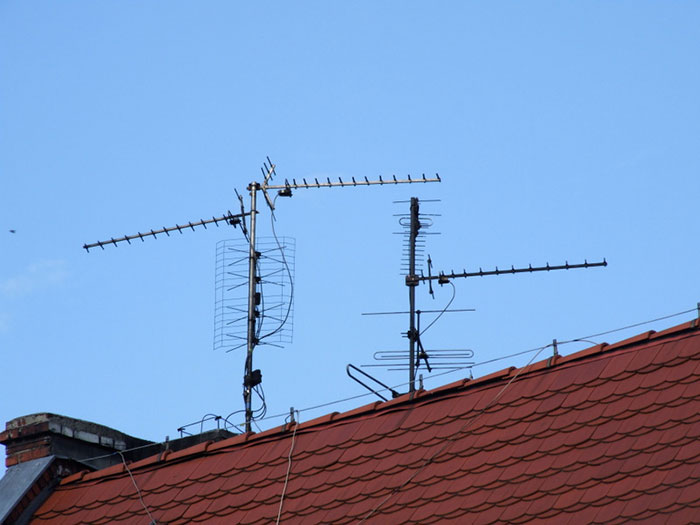
A few words should be said about the antenna with a television amplifier Locus. A significant advantage of which is the possibility of replacing an amplifier that has failed for various reasons with a new analogue.
Properly selected device to improve the quality of the television signal will significantly improve the quality of the image and allow you to enjoy watching your favorite TV shows and movies without interference and noise. To do this, just start choosing an amplifier for the antenna, guided by the above tips.
Installation of the amplifier on the antenna - video
Often, even in the city, using a conventional TV receiver, there are problems with signal quality. To avoid this, you can connect satellite or cable TV. People in rural areas cannot do this and are forced to watch a bad image. If you want to improve the quality of the picture on the screen that the antenna gives out, then you need to connect an amplifier to it. This device will be useful if the TV tower is too far away or if you have a bad antenna or picked it up incorrectly. Such a device helps to improve the quality of the signal that TV receives. Often amplifiers are used in country houses and on the lower floors of apartment buildings. Since there are different antenna amplifiers for TV, how to choose the right one, we will tell in this article.
Main selection criteria
To choose the right antenna amplifiers for your TV, you need to keep in mind the following characteristics.
Required frequency range
On this basis, devices are divided into:
- broadband - work only in their own frequency band;
- range - reinforce a specific predetermined range;
- multirange - work in several ranges.
Distance to the TV tower
Look at the map for the nearest TV tower. Knowing the distance, you can calculate the required gain.
Important! This can be done using the RTRS website - it allows you to find out the coverage area of digital terrestrial television in your area and the place where the towers are located.
Do not take too powerful a device, it will create unnecessary interference.
Properties of the device itself
They are the noise figure, the current and voltage consumed by the device, and the gain.
Type of antenna and signal
Among other things, the choice of receiver depends on what kind of you use it. You need to know this in order to choose a TV signal amplifier. They are made for antenna, cable and satellite signals. A little more about each.
Antenna
May be useful if:
- the house is far from the transmitting station;
- the signal is drowned out by buildings or trees;
- with incorrect installation of the antenna.
Important! Before buying it, try to twist the antenna itself. It may be possible to improve the signal.
Often, in order to improve the image quality, you should buy an active antenna with a built-in gain path. So often do people living in urban apartments.
Important! Such devices are very convenient and compact, you can move them indoors and find the optimal place to receive the signal.
Cable
They can be met much less often, because cable television providers, as a rule, give a pretty decent signal. Such devices are purchased when you need to connect multiple TVs from one point. Therefore, they are often installed separators signal.
Important! Often, signal amplification is not necessary at all. You can buy a conventional splitter, installing where the cable enters the apartment. It will also not add interference. But if you have more than three television receivers in your apartment, then the signal will need amplification.
Satellite
They are also not very common. As a rule, people prefer to install a satellite dish with a large radius or replace equipment with more modern ones.
Important! Sometimes to improve the signal, install a cable amplifier on antenna input tv set The main condition - the frequency ranges must match.
Active or passive amplifier
One of the classification criteria is the principle of operation of such a device. On this basis, there are active and passive devices. The main difference is that active devices are installed antenna amplifierwhich is powered by the network. He needs an adapter of 12 or 9 volts.
There are certain requirements for installing such a device:
- The device should be located as close as possible to the point of reception - this greatly increases the signal quality.
Important! When installing this amplifier in this way, the quality will not be damaged even by distortions that occur in the feeder, which is 75 ohm wire.
- It is better to protect the device from rain and snow.
- You can not place it too close to the TV - it will cause interference.
- You can connect the power through the antenna cable. It is better to use a coaxial cable to connect.
Important! With an active antenna amplifier, it is possible to connect the power supply separately, and put it in the room.
Which amplifier for the TV antenna is better? Consider these recommendations so that the choice is reasonable:
- It is necessary to choose the device with the desired gain. The largest possible distance is 150 km.
Important! If the distance to the TV tower is less than 10 km, the antenna amplifier for the TV is not needed, it is enough to correctly install the antenna itself.
- You should not strive to buy a device with the highest gain - such devices can create very strong interference.
- You can connect a broadband device and you can catch all the channels available to you. Most often choose this option.
Important! For the same antenna you can find a variety of amplifiers with different characteristics. To simplify your task of choice, use the special tables with which you can select the desired model.
Amplifier factors
Here are more points regarding the characteristics of the device, which will help you choose antenna amplifiers for your TV. But the overall gain will consist of several parts:
- The conversion factor of the amplifier;
- Gain.
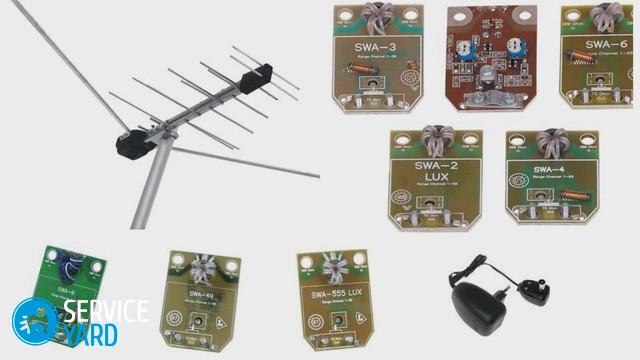 The first parameter is pretty obvious, and the second one needs to be clarified. It can generally be zero. An antenna with this conversion factor will be omnidirectional.
The first parameter is pretty obvious, and the second one needs to be clarified. It can generally be zero. An antenna with this conversion factor will be omnidirectional.
Such devices can also be used with an amplifier. Here are some of the pros and cons:
- Receives a signal from all sides, it means - no need to spend time on the guidance of a television antenna. But this property also increases the amount of interference, and with an amplifier they will become even more.
- They have better gain, they give less noise. But they are harder to install correctly. If the direction of the beam from the television tower changes, problems with reception will arise.
- Omnidirectional devices can receive a signal from more than one tower. There is a possibility that the image may begin to double. The same can be with over-power.
Important! Consider the radiation pattern. The devices receive the signal in the best way in no more than two directions. They specifically have this design. The directivity of the antenna depends on its shape.
Popular manufacturers and models
Now there are many different manufacturers. But which amplifier for the TV antenna is better?
Delta
Among the Russian manufacturers the company Delta is popular. It produces active antennas. Judging by the user reviews - this is quite a good manufacturer.
The following models are in constant demand:
- Delta 3311 A. It has a log-periodic scheme. However, the antennae for MW frequencies are firmly fixed so that the device does not start to sway strongly on the mast with the wind. This would prevent signal reception.
- Delta K 331 A. This device has a gain for different ranges. In the range of the decimeter frequency - this is 24 dB, in VHF - 14 dB, in the range of KV - 6 dB. This model has the best reception on regional channels and digital television. To cover this range uses built-in digital antenna amplifiers, which allow to achieve very good quality.
- Delta C 331 A.03. A device with better qualities than the previous two. This antenna is log periodic. For the range of MV has a telescopic antenna. This is an indoor model, it cannot be installed on the street.
SWA
For lattice antennas of the type "Polish" choose the amplifier of the TV signal SWA. Its range is 49-790 MHz. It is better to strive to purchase a device with a lower noise figure and not the largest gain.
Important! There are a lot of SWA models, so when choosing, pay attention to the characteristics that suit you.
Locus
A fairly common model, the failure of which requires the installation of an antenna LSA amplifier. He will resume its work and improve the quality of the signal.
Alkad
These amplifiers have 2-4 outputs, you can connect more than one TV to them. Some of these models allow you to change the gain, and in different ranges.
Terra
This company from Lithuania produces antenna amplifiers with multiple inputs, which allows you to add signals from several antennas. They also produce appliances with multiple outputs.
Important! Together with an amplifier, a power supply is usually sold. The manufacturers of active antennas and amplifiers are basically the same. Some of these include additional features such as radio reception.
In this article we have prepared for you an overview of all the important technical characteristics and popular manufacturers, models of antenna amplifiers. The question of how to choose the right one, we hope, is now solved very simply for you.
Admin | 2 June 2017 | Comments: 1Strengthening the receiving capacity of your antenna can be achieved in various ways, including such simple means as removing your antenna from ...
If you are not connected to cable tv, you are most likely using a television antenna through which your television receives TV signals. Of course, the purchase is good and powerful antenna can increase your chances of getting some channels that are currently unavailable to you and improve the quality of the received image.
But we will consider another possible option, this is strengthening the receiving capacity of the antenna you already have. This can be achieved in various ways, including such simple means as taking your antenna out of the apartment to the outside, or moving the television antenna around the room to find a better reception location.
Several ways to increase the power of your television antenna
- A good result can be obtained using a television preamplifier. it electrical device connects directly to the antenna and gives a boost to the received signal. You can find it in most electronics stores.
- Another simple way is to add more antennas to the outside of your home. Two or more antennas will work together, in effect they will be comparable to an antenna installed at a higher place. What will allow to get better and amplified signal and transfer it to your television. It is best to fix external antennas on the roof or on the outer wall of the house as high as possible.
- Strengthen the signal quality by expanding your antenna with a piece of television wire, try to increase or decrease the length of this wire, change the location of the “piece of wire” that you use as an addition to the antenna ... For quick fixing during wire adjustment, use a small piece of adhesive tape.
- Remove any metal objects or other objects that can conduct electricity near the antenna. These foreign objects can affect the quality of the signal your antenna receives.
To watch television in the country or in small towns usually use a television or satellite dish. Satellite allows you to view a large number of channels in digital and HD-quality, and conventional television receive on-air digital TV. As a rule, it is 20 digital channels.
But sometimes it happens that the signal is interrupted, the image is distorted and on the screen interference. This may be due to different reasons:
- problems of the broadcast itself;
- problems with receiving equipment;
- weak signal.
In the latter case, you can try your television antenna. At the same time, remember that such actions also increase noise and interference. Therefore, you can first try to improve the signal by reducing losses.
Varieties
Satellite dishes, also called plates, vary in diameter. The bigger it is, the better the quality of the reception. A converter is installed on the plate itself, transmitting the signal to the receiver. There are also signal amplifiers.
Varieties of satellite dishes:
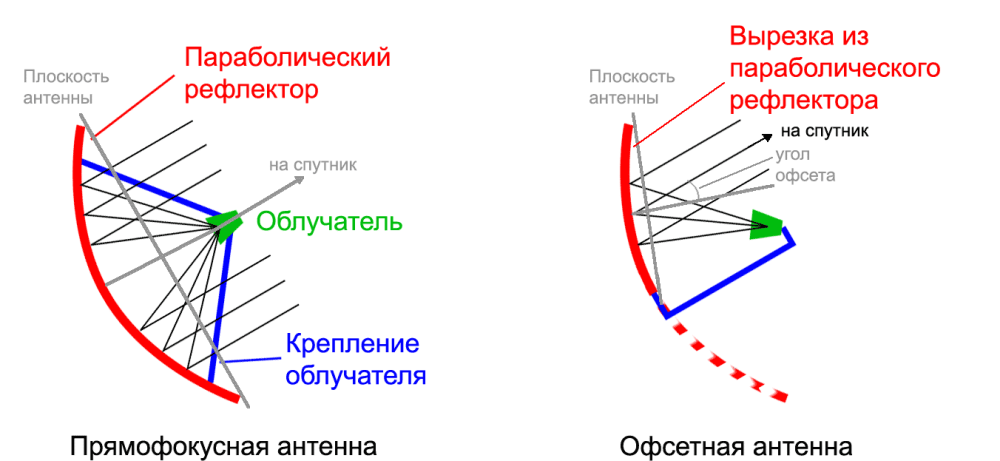
TV antennas are:
- Indoor and external depending on the place of installation. Indoor rooms are suitable only for zones of reliable reception and in the absence of significant obstacles to the signal path.
- Active and passive. In the first case, an active signal amplifier connected to the mains is used.
- According to the range of received waves, there are all-wave, meter (MW) and decimeter (UHF). Digital broadcasting in Russia it is conducted on decimeter frequencies, so that the UHF antenna is sufficient.
The following factors influence the quality of the TV signal:
- remoteness from the broadcast tower;
- construction and material;
- active or passive amplification;
- connection losses.
Loss reduction
To improve the signal from a television or satellite dish, you can try to reduce losses in the system:
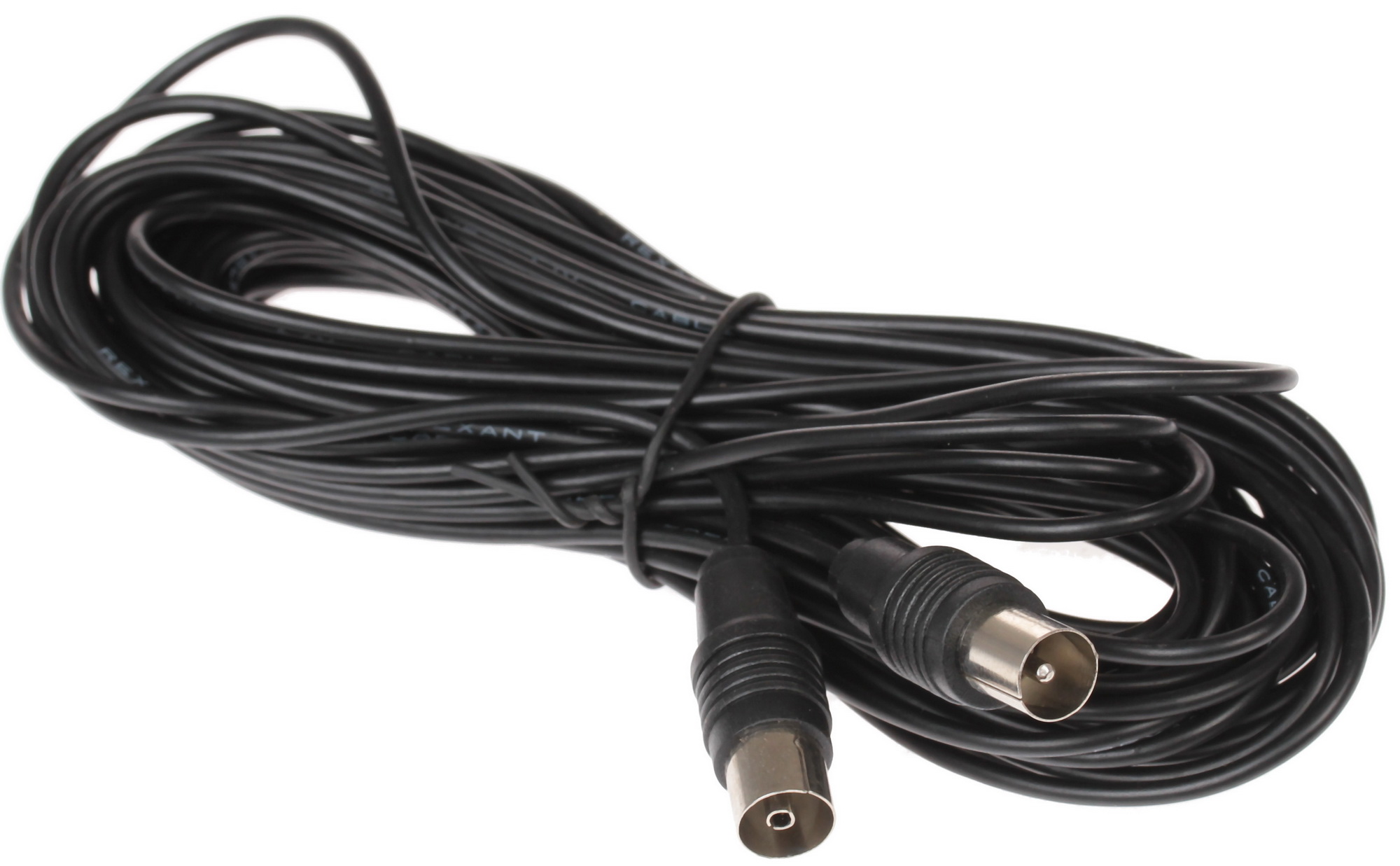
Signal gain
Strengthen the signal of the TV as follows:
- In the case of room, place it as close as possible to the window and preferably higher. Make sure there are no obstructions in the signal path.
- Lift the external antenna on the roof or higher on the facade so that the reception is not hampered by buildings or terrain.
- Properly route the external antenna. This recommendation is also relevant for a satellite dish. Often, problems with a signal are simply due to its wrong location.
- You can try to expand the antenna with a piece of wire.
- Create a common-mode array of several identical antennas, arranging them horizontally and vertically so that the phases of the signal in them are the same.
- Replace the antenna with a more suitable in design and type.
- Install a signal booster.
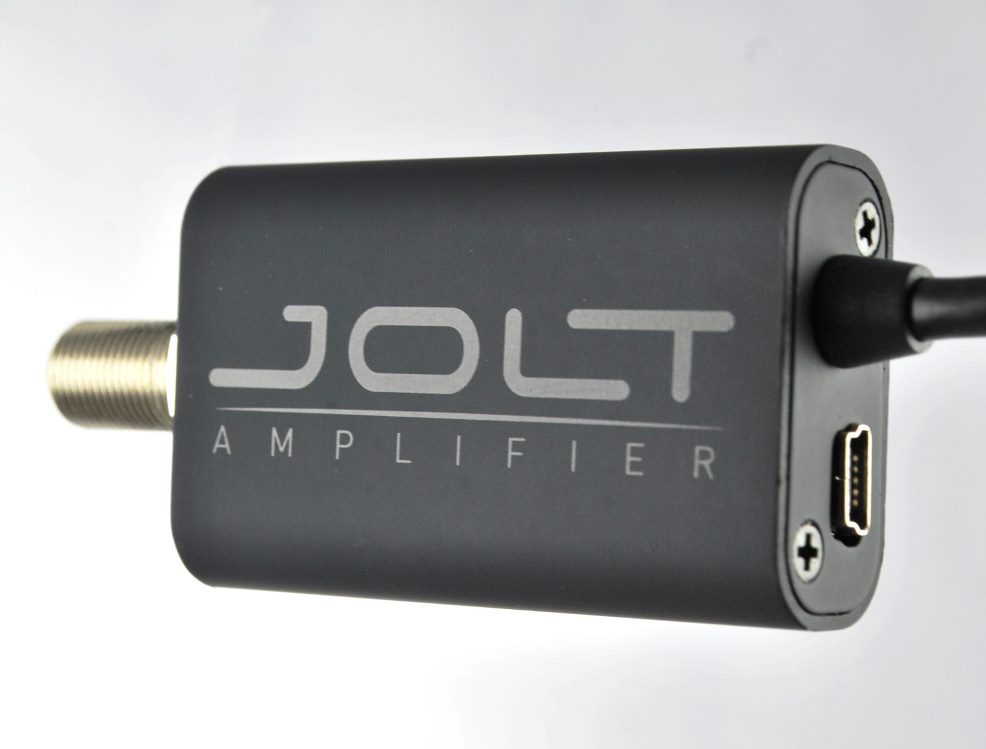
To decide how to enhance the signal, follow the simple rule: if the tower is less than 30 kilometers, then any external one will do. passive antenna. If the signal is bad, then the problem is inside the system, in the equipment, connections or improper installation. If the repeater is more than 30 km away, then use an active amplifier:
- The farther the distance, the greater the gain you will need.
- Choose with the lowest noise figure, more precisely, it is better to pay attention to the "gain / noise" ratio.
- Pay attention to the voltage of the device. If you increase it, you can increase and gain.
In the same way, you can enhance the signal and satellite dish. There are also combined amplifiers, working and not television broadcasting, and satellite dish. If you are familiar with the theory and practice of radio electronics, then you can assemble an amplifier for a satellite or television antenna with your own hands, there are many schemes on the Internet and special manuals.
Install the amplifier as close to the antenna as possible. But remember that if you install it outside the room, then it will not last long, most likely not more than a year. Due to adverse weather conditions, it may oxidize and cease to function normally.
If your satellite dish used to work normally and suddenly there were interferences, then you can improve the signal with your own hands in the following ways:
- Check the health of all elements of the system, perhaps some equipment or part is mechanically damaged, dirty or rusted.
- The location and direction of the antenna may have been lost. In this case, it should be redirected, as it was before.
- Check for obstacles in the signal path. This may be sticking snow, leaves, branches of a grown tree or a new high structure.
If you initially have problems with image quality, replace the plate with one that has a larger diameter. Consult your TV operator for compatible equipment and proper installation.
Thus, most of the methods and recommendations are universal and can improve the signal of both satellite and television antennas. When satellite tv such a concept as the distance to the broadcasting source is not used, and the correct directionality, diameter and absence of barriers are decisive. You can buy an amplifier or make it yourself, but do not forget that it itself is a source of noise and interference. And the use of such devices is desirable to minimize. Share your comments in the comments if you have encountered problems with receiving a signal in the countryside, how and with what means you have been able to improve the quality of television reception.



